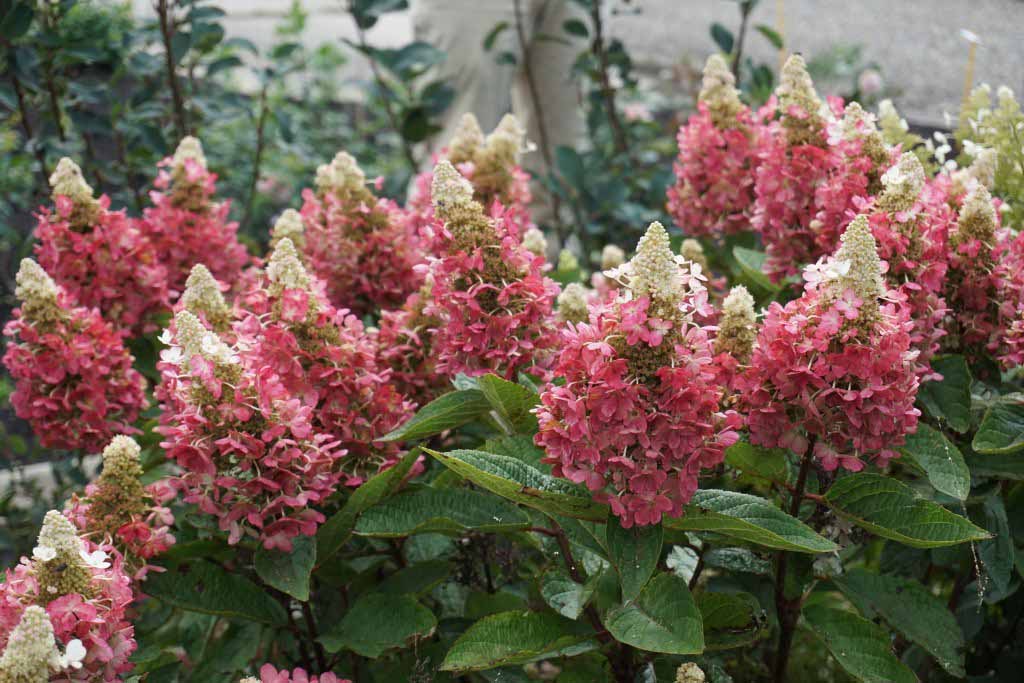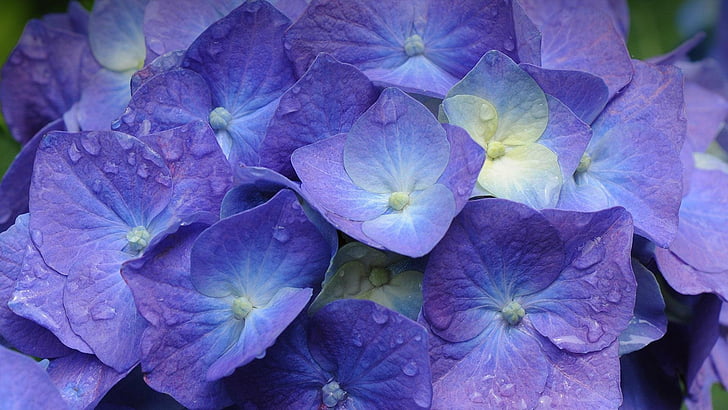Introducing The Flare Hydrangea: The Showstopping Shrub That Will Brighten Up Your Garden
Introducing the Flare Hydrangea: The Showstopping Shrub That Will Brighten Up Your Garden
If you're looking for a showstopping shrub that will brighten up your garden, look no further than the Flare Hydrangea. This gorgeous plant is known for its large, flamboyant blooms that emerge pure white and then turn bright red from the bottom up. Flare Hydrangeas are relatively easy to care for and can tolerate a wide range of conditions, making them a great choice for gardeners of all skill levels.
In this blog post, we'll take a closer look at the Flare Hydrangea, including its:
- Description
- Growth habits
- Bloom time
- Color range
- Care requirements
- Pests and diseases
- Where to buy
We'll also share some tips for how to get the most out of your Flare Hydrangeas. So whether you're a seasoned gardener or just starting out, read on to learn more about this amazing plant!
Description
Flare Hydrangeas are deciduous shrubs that grow 2 to 3 feet tall and wide. They have large, heart-shaped leaves that are dark green in color. The flowers are borne in large, conical panicles that can reach up to 12 inches in length. The flowers start out white and then gradually turn bright red from the bottom up. Flare Hydrangeas bloom in late summer and early fall.
Growth Habits
Flare Hydrangeas are relatively easy to care for and can tolerate a wide range of conditions. They prefer full sun to partial shade and moist, well-drained soil. Flare Hydrangeas are hardy in USDA zones 4 to 9.
Bloom Time
Flare Hydrangeas bloom in late summer and early fall. The flowers can last for several weeks, depending on the weather conditions.
Color Range
Flare Hydrangeas typically bloom in white, but they can also be found in shades of pink, red, and purple. The color of the flowers depends on the soil pH. In acidic soils, the flowers will be blue or purple. In alkaline soils, the flowers will be pink or red.
Care Requirements
Flare Hydrangeas are relatively low-maintenance plants. They need to be watered regularly, especially during hot, dry weather. They should also be fertilized in the spring with a balanced fertilizer. In the fall, the leaves should be removed and the plant should be mulched to protect the roots from the cold.
Pests and Diseases
Flare Hydrangeas are relatively resistant to pests and diseases. However, they can be susceptible to aphids, scale, and powdery mildew. If you see any pests or diseases on your plant, you should treat them immediately with an appropriate pesticide or fungicide.
Where to Buy
Flare Hydrangeas can be found at most garden centers. You can also order them online from a variety of retailers.
Tips for Getting the Most Out of Your Flare Hydrangeas
Here are a few tips for getting the most out of your Flare Hydrangeas:
- Plant them in full sun to partial shade.
- Water them regularly, especially during hot, dry weather.
- Fertilize them in the spring with a balanced fertilizer.
- Remove the leaves in the fall and mulch the plant to protect the roots from the cold.
- Watch for pests and diseases and treat them immediately if you see any.
- Enjoy their beautiful blooms in late summer and early fall!
If you're looking for a hydrangea that will add a touch of flare to your garden, look no further than the Flare Hydrangea. This compact, showy shrub produces abundant white flowers that gradually turn bright red in the fall. It's perfect for planting in a walkway, border, or patio container, and it's so easy to care for that even beginners can have success with it.
To learn more about the Flare Hydrangea, I suggest visiting . This website has a wealth of information about the plant, including its care requirements, planting tips, and pest and disease prevention. You can also find photos and videos of the Flare Hydrangea in bloom, so you can see for yourself how beautiful it is.
FAQ of flare hydrangea
- What is a flare hydrangea?
A flare hydrangea (Hydrangea paniculata 'Kolmavesu') is a type of panicle hydrangea that is known for its large, cone-shaped blooms. The blooms start out white and gradually turn pink or red as they mature. Flare hydrangeas are hardy in USDA zones 3-8 and can grow up to 6 feet tall and wide. They prefer full sun to partial shade and moist, well-drained soil.
- How do I care for a flare hydrangea?
Flare hydrangeas are relatively easy to care for. They need to be watered regularly, especially during hot, dry weather. They also benefit from a layer of mulch around the base of the plant to help retain moisture and suppress weeds. Flare hydrangeas should be pruned in early spring, before new growth begins. Pruning will help to shape the plant and encourage new blooms.
- What are the different colors of flare hydrangeas?
The color of flare hydrangea blooms depends on the pH of the soil. In acidic soil, the blooms will be blue or purple. In alkaline soil, the blooms will be pink or red. You can change the color of the blooms by adjusting the pH of the soil. To make the blooms blue, add sulfur to the soil. To make the blooms pink, add lime to the soil.
- How long do flare hydrangeas bloom?
Flare hydrangeas bloom in late summer and early fall. The blooms can last for several weeks, depending on the weather conditions.
- How long do flare hydrangeas live?
Flare hydrangeas are long-lived shrubs that can live for up to 50 years if properly cared for.
Image of flare hydrangea
5 different images of "flare hydrangea" from Pinterest:
- Image 1: A full grown flare hydrangea in bloom. The flowers are a vibrant red color and are arranged in large, conical clusters. The plant is surrounded by lush green foliage.

- Image 2: A close-up of the flowers of a flare hydrangea. The individual flowers are small and star-shaped, with a delicate white color. The petals are slightly ruffled and the centers are filled with bright yellow stamens.

- Image 3: A young flare hydrangea plant in a pot. The plant is still small, but it has several clusters of small white flowers. The leaves are a deep green color and are arranged in a spiral pattern on the stems.

- Image 4: A flare hydrangea in the fall. The flowers have turned a deep red color and are starting to fade. The leaves have also turned a brilliant red color.

- Image 5: A flare hydrangea in the winter. The flowers have fallen off, but the leaves remain on the plant. The leaves are a deep brown color and are starting to curl up.

Post a Comment for "Introducing The Flare Hydrangea: The Showstopping Shrub That Will Brighten Up Your Garden"